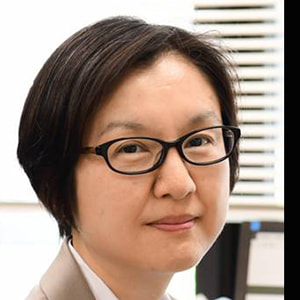Session 3
13 July 2021
4:30 - 6:00pm SGT
5:30 - 7:00pm JST
13 July 2021
4:30 - 6:00pm SGT
5:30 - 7:00pm JST
On-demand viewing is a privilege of SRSS & JSID members and paid registrants.
Abstract
Skin is a dynamic organ that expands and shrinks flexibly in response to physiological changes in body shape. However, the dynamicity of epidermal and dermal cells in physiological skin remodeling remained unknown for a long time. During pregnancy, the abdominal skin expands rapidly to accommodate foetal growth. We have identified a highly proliferative interfollicular epidermal (IFE) basal cell population emerging in the abdominal skin of pregnant mice. This population includes Tbx3-expressing basal cells (Tbx3+-BCs), which are generated from IFE stem cells in response to dermal signals. Tbx3+-BCs induce activation of ADAM8-ERK signaling in neighboring cells to shape epidermal proliferating clusters (EPCs). Single clonal lineage tracing revealed that Tbx3+-BC clones undergo differentiation after parturition to be eliminated from epidermis. In the proliferating plantar epidermis, Tbx3+-BCs are sustained as long-lived SCs to maintain EPCs invariably. Tbx3+-BCs are vasculature-dependent IFESC populations, and identified mechanical stretch as an external cue for the vasculature-driven EPC formation. Vasculature and stretch-mediated IFESC regulation explains how epidermis adjusts its size in orchestration with dermal constituents in dynamic skin.
Skin is a dynamic organ that expands and shrinks flexibly in response to physiological changes in body shape. However, the dynamicity of epidermal and dermal cells in physiological skin remodeling remained unknown for a long time. During pregnancy, the abdominal skin expands rapidly to accommodate foetal growth. We have identified a highly proliferative interfollicular epidermal (IFE) basal cell population emerging in the abdominal skin of pregnant mice. This population includes Tbx3-expressing basal cells (Tbx3+-BCs), which are generated from IFE stem cells in response to dermal signals. Tbx3+-BCs induce activation of ADAM8-ERK signaling in neighboring cells to shape epidermal proliferating clusters (EPCs). Single clonal lineage tracing revealed that Tbx3+-BC clones undergo differentiation after parturition to be eliminated from epidermis. In the proliferating plantar epidermis, Tbx3+-BCs are sustained as long-lived SCs to maintain EPCs invariably. Tbx3+-BCs are vasculature-dependent IFESC populations, and identified mechanical stretch as an external cue for the vasculature-driven EPC formation. Vasculature and stretch-mediated IFESC regulation explains how epidermis adjusts its size in orchestration with dermal constituents in dynamic skin.
Bio
Dr Fumiko Toyoshima is a Professor at Institute for Frontier Life and Medical Sciences (inFront), Kyoto University Japan. Fumiko’s laboratory focuses on studying skin remodeling during pregnancy and regeneration, the mechanism of skin vascularization, and skin mechanobiology. Fumiko obtained her PhD from Kyoto University in 2000. She was awarded PRESTO research fund in 2005, and started the project of oriented cell division in mammalian culture cells and embryonic mouse skin. She joined the faculty member of inFront in 2008.
Dr Fumiko Toyoshima is a Professor at Institute for Frontier Life and Medical Sciences (inFront), Kyoto University Japan. Fumiko’s laboratory focuses on studying skin remodeling during pregnancy and regeneration, the mechanism of skin vascularization, and skin mechanobiology. Fumiko obtained her PhD from Kyoto University in 2000. She was awarded PRESTO research fund in 2005, and started the project of oriented cell division in mammalian culture cells and embryonic mouse skin. She joined the faculty member of inFront in 2008.
Abstract
Biomechanical signals are important determinants of cell behavior, but much less is known about the role of other biophysical parameters. One such parameter is bioelectricity, which includes the Transepithelial potential difference (TEPD). In this talk, we discuss in vitro experiments that study the effects of the TEPD on epithelial layers other than the usual nutrient/ion transport functions discussed in textbooks. Using a novel microfluidic device which allows the manipulation of the natural TEPD in Madin Darby Canine Kidney (MDCK) cells, it is found that an external E-field opposing the natural one disrupts the monolayer from the molecular to tissue level. Conversely, applying a field reinforcing the original one not only maintains normal monolayers, but even rescues mutant cells which cannot form proper monolayers. Some observations have been replicated in keratinocyte multilayers. The physical mechanism and implications for in vivo systems including skin will be discussed.
Biomechanical signals are important determinants of cell behavior, but much less is known about the role of other biophysical parameters. One such parameter is bioelectricity, which includes the Transepithelial potential difference (TEPD). In this talk, we discuss in vitro experiments that study the effects of the TEPD on epithelial layers other than the usual nutrient/ion transport functions discussed in textbooks. Using a novel microfluidic device which allows the manipulation of the natural TEPD in Madin Darby Canine Kidney (MDCK) cells, it is found that an external E-field opposing the natural one disrupts the monolayer from the molecular to tissue level. Conversely, applying a field reinforcing the original one not only maintains normal monolayers, but even rescues mutant cells which cannot form proper monolayers. Some observations have been replicated in keratinocyte multilayers. The physical mechanism and implications for in vivo systems including skin will be discussed.
Bio
Thuan Beng Saw is a Lee Kuan Yew Research Fellow at the Department of Biomedical Engineering and Mechanobiology Institute at National University of Singapore. He studies the role of biophysical signals in collective cell fate using in vitro models including epithelial cells.
Thuan Beng Saw is a Lee Kuan Yew Research Fellow at the Department of Biomedical Engineering and Mechanobiology Institute at National University of Singapore. He studies the role of biophysical signals in collective cell fate using in vitro models including epithelial cells.
Chairs
Kenneth LAY, GIS, Singapore
Hironobu FUJIWARA, Riken, Japan
Kenneth LAY, GIS, Singapore
Hironobu FUJIWARA, Riken, Japan


